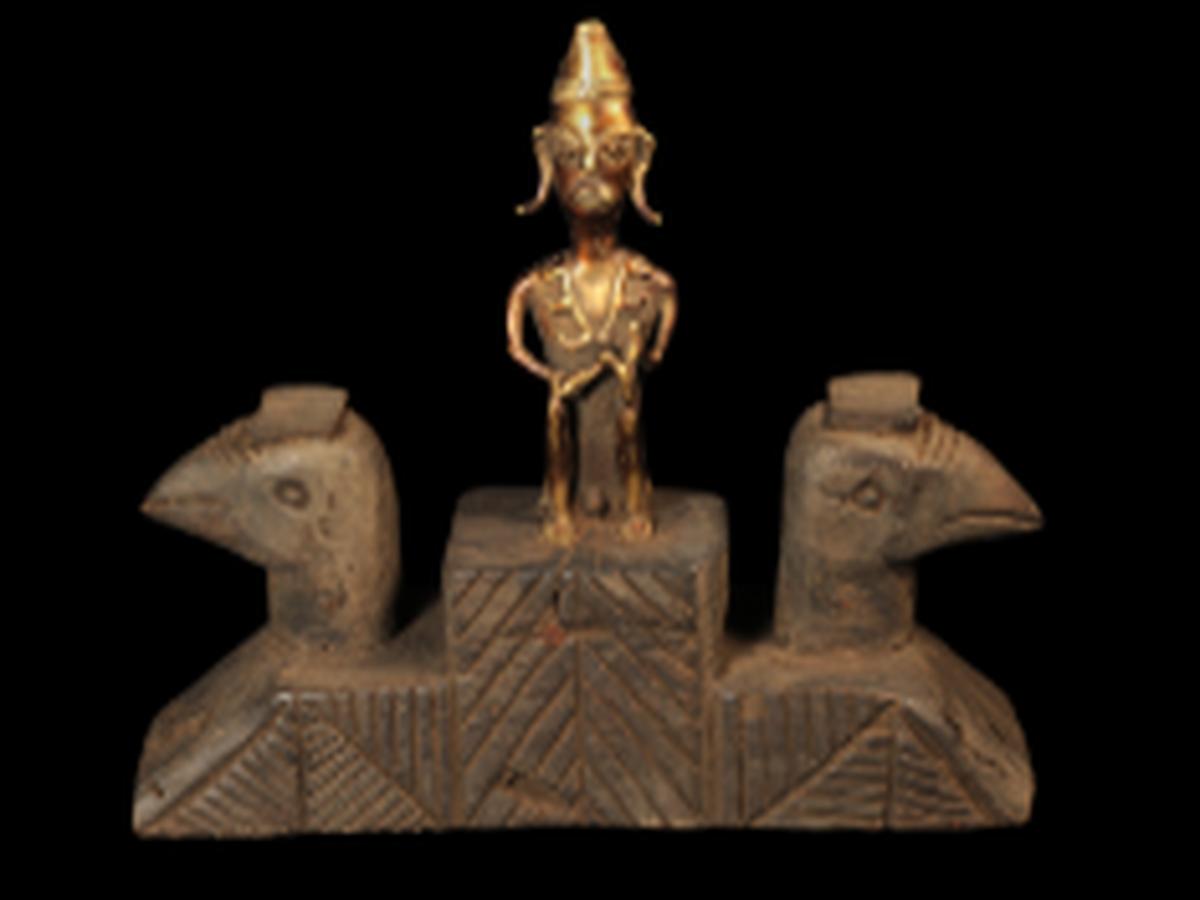State
Tribe Name
Art Type
short description
The heads of two exquisitely carved hornbills are affixed onto either end of it. Konyaks inhabit primarily the Mon district, displaying traditional warrior practices and very skillful, symbolic ritual object making. Metal male seated figure-Erasure Dignity and authority seem to emanate from this figure. The very act of sitting could represent wisdom or respect for ancestors or could denote a state of contemplation of ritual matters. It does signify longevity and prestige, perhaps even the honor bestowed upon an elder or hereditary spiritual leader, or perhaps a mythical warrior
Thumbnail

Filter Postion
Left
Filter Background
Off
Theme
Filter Header Image

content
Image

description
The heads of two exquisitely carved hornbills are affixed onto either end of it. Konyaks inhabit primarily the Mon district, displaying traditional warrior practices and very skillful, symbolic ritual object making. Metal male seated figure-Erasure Dignity and authority seem to emanate from this figure. The very act of sitting could represent wisdom or respect for ancestors or could denote a state of contemplation of ritual matters. It does signify longevity and prestige, perhaps even the honor bestowed upon an elder or hereditary spiritual leader, or perhaps a mythical warrior.
The wooden pedestal beneath the figure has two hornbill heads as features. Such a tool is lustrous and strong among Konyak symbols. The great Indian hornbill may not be of this region, but it is among the sacred symbols-it stands for strength, valor, and honor. Traditionally great warriors who performed acts of bravery in battle used to have their headgear decorated with hornbill feathers. The carver, by placing the bird on the effigy, could well be linking the status of this figure to deeds of valor or divine protection. Animal symbolism blended with ancestor veneration represents another dimension of Konyak belief systems, demonstrating the complexities of Konyak belief systems. An effigy now housed in museums like the Indian Museum, Kolkata, still breathes that living spirit of the Konyak Naga tribe through its ethos and story-telling
The wooden pedestal beneath the figure has two hornbill heads as features. Such a tool is lustrous and strong among Konyak symbols. The great Indian hornbill may not be of this region, but it is among the sacred symbols-it stands for strength, valor, and honor. Traditionally great warriors who performed acts of bravery in battle used to have their headgear decorated with hornbill feathers. The carver, by placing the bird on the effigy, could well be linking the status of this figure to deeds of valor or divine protection. Animal symbolism blended with ancestor veneration represents another dimension of Konyak belief systems, demonstrating the complexities of Konyak belief systems. An effigy now housed in museums like the Indian Museum, Kolkata, still breathes that living spirit of the Konyak Naga tribe through its ethos and story-telling
Image Mode
landscape
promoted
On
Verified
Off
